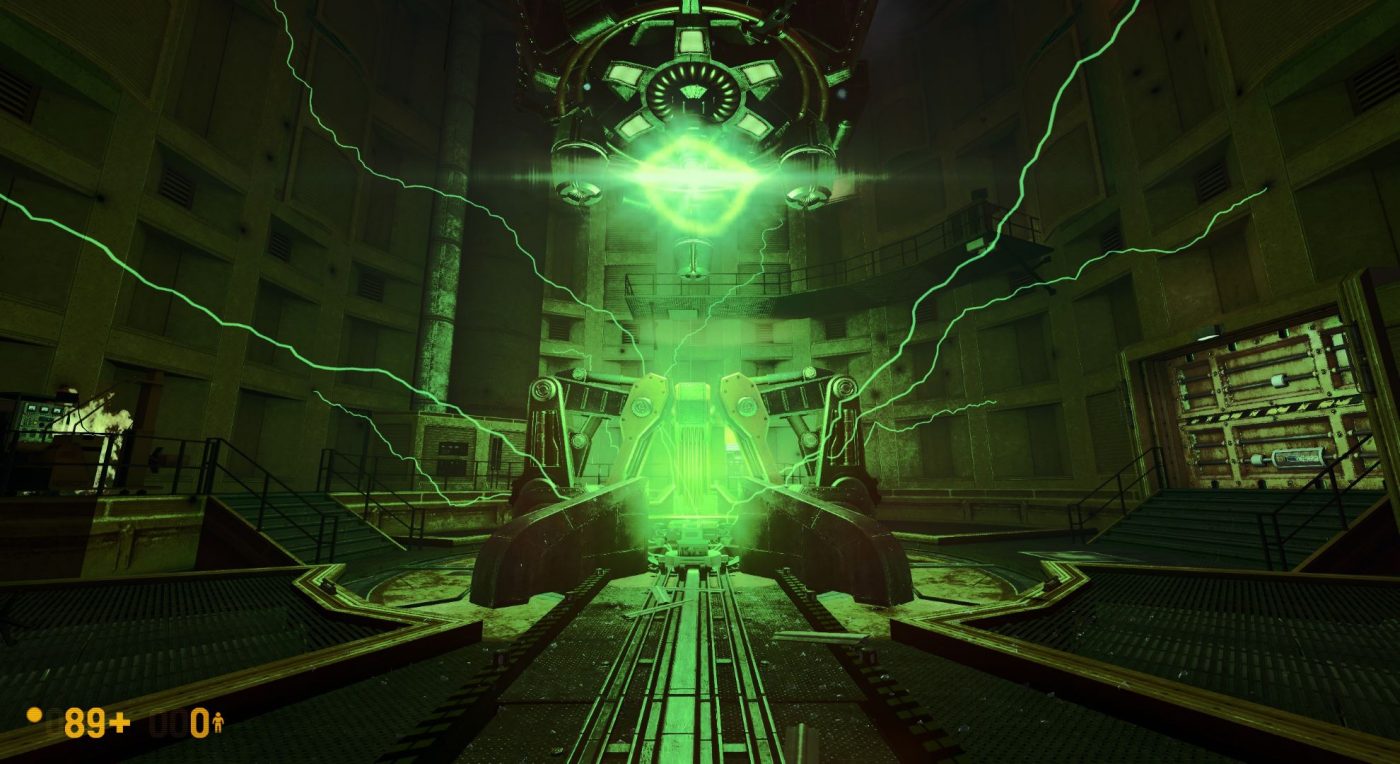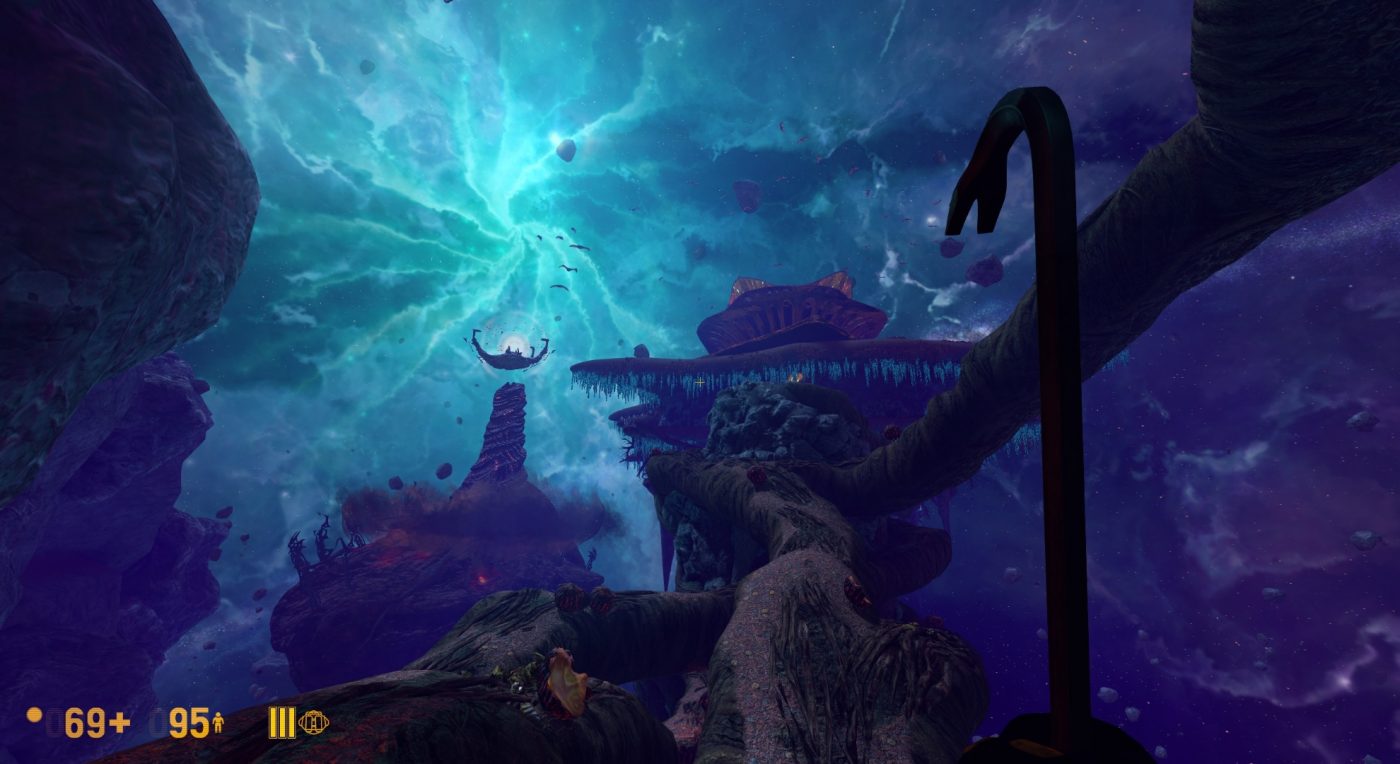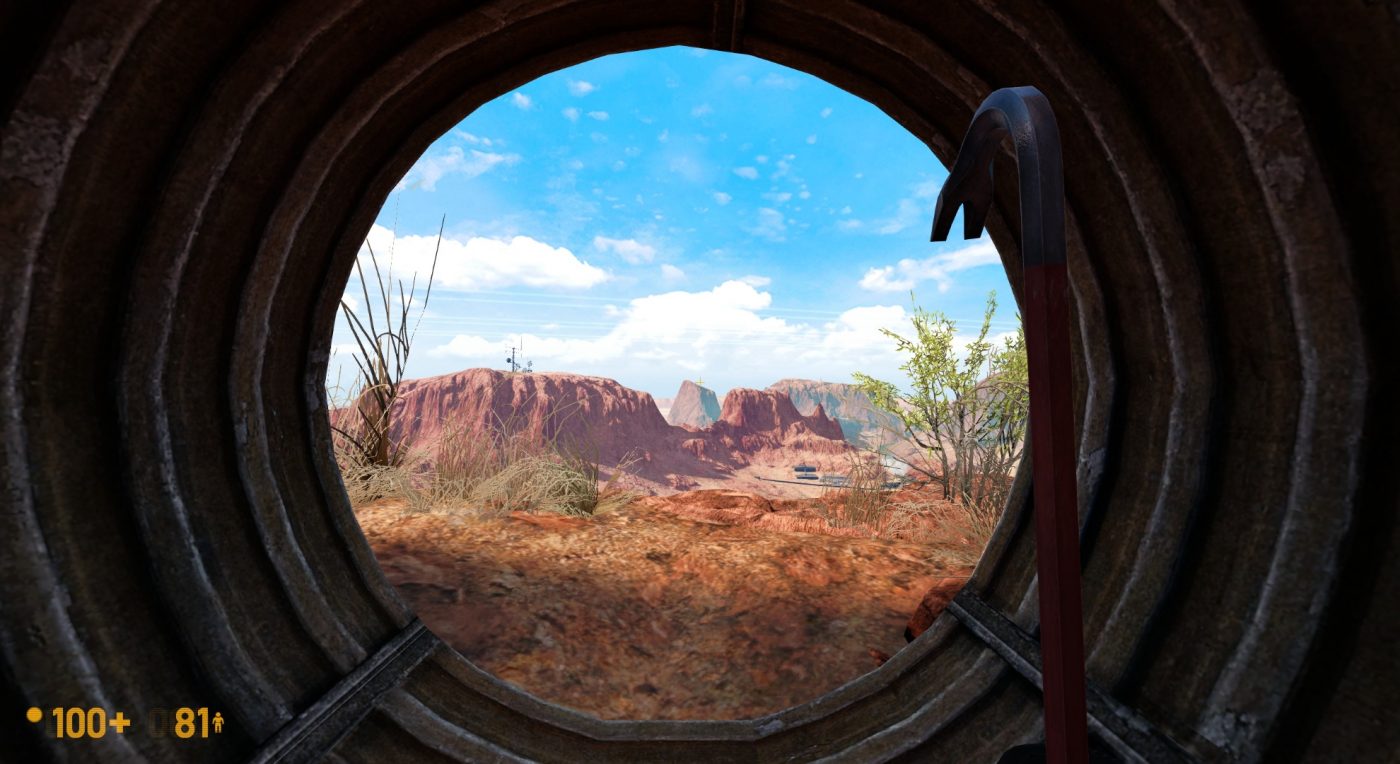I must have been about ten years old when I played the original Half-Life for the first time. I can only remember snatches of it. Eviscerated zombies crawling towards me horrifyingly quickly. The sound of my suit flatlining when I died. Glimpses of a mysterious man in a grey suit. And air ducts, of course. Lots and lots of air ducts.
Back then, I never got any further than the first few chapters. Maybe it became too scary, or maybe I got stuck and gave up. Probably my mum caught me playing what was very obviously not a game designed for ten year-olds and it was confiscated. Something about the game’s lonely, forbidding atmosphere stuck with me, however. Playing Black Mesa over the last couple of weeks – Crowbar Collective’s originally unofficial but then Valve-sanctioned remake of Half-Life, in the making for the best part of 16 years before finally reaching version 1.0 in March 2020 – it’s been quietly pleasing to find these fragmented memories suddenly brought back to life.
Which isn’t to say that the game’s appeal is purely nostalgic. Like 2019’s Resident Evil 2 remake and Bluepoint’s 2018 reimagining of Shadow of the Colossus, Black Mesa keeps what made the original such a special game while introducing additions, omissions and broad quality of life improvements that make it more accessible for modern players. The most noticeable of these is a complete graphical overhaul. Every asset, model and texture has been lovingly (not to mention painstakingly) rebuilt in the Source engine, but the overall aesthetic still retains enough chunkiness and blocky geometry to be reminiscent of the original 1998 release. In fact, it had me pining for a toggle that would allow me to switch between the original and updated graphics, similar to those found in the anniversary edition of Halo: Combat Evolved or the recent suite of redrawn Lucas Arts adventure games. That such a toggle is not included I initially thought was something of an oversight. Surely, in the years and years that this remake spent in early access, a feature like this would have been among the most frequently requested by the huge community of fans surrounding the game?

But I soon realised, of course, that the reason something like this isn’t there is because Crowbar Collective have expanded so much upon the original game. There are rooms, sections, encounters, set pieces and entire levels, almost, that have no graphical antecedent, simply because in the first game they didn’t exist. Significant chunks of Black Mesa are Crowbar Collective’s own, to the extent that ‘reimagining’ might be a more appropriate label for the game than ‘remake’. Even the opening monorail section, where the player’s experience is limited to looking out the window as the carriage makes its way through the depths of the facility, is extended compared with the original game. It’s a testament to the quality and craftsmanship of these expanded and added sections that I found it impossible to tell what was Valve’s and what was Crowbar Collective’s.
What I can be certain of, however, is that where the remakers have bettered the original developers is in the game’s final act. Among all the gushing praise for Half-Life when it first came out, if reviewers did have anything critical to say, they saved it for these last few levels. Short, underwhelming and frustrating, the Xen section of Half-Life is one that most fans would likely rather forget. In Black Mesa, however, this part of the game has been rebuilt almost entirely from the ground up and the results are truly something to behold. Stepping out of the trans-dimensional portal for the first time, I was put in mind of Metroid Prime, No Man’s Sky and the warped, alien worlds depicted in the art of Roger Dean. It’s a perfect juxtaposition with the claustrophobic underground passages and ugly industrial environments that serve as the backdrop for the majority of the game up until this point.

Overall, however, what I found most interesting about Black Mesa was how it compared not with the original Half-Life but rather with its sequels. I’ve been on a bit of a Half-Life retrospective over the last six months or so, in that time replaying Half-Life 2 and its two Episodes, and I’ve been lucky enough to experience the masterful Half-Life Alyx, too. What immediately struck me about Black Mesa, and this was a feeling that only grew as the game went on, is how, tonally, it’s a much darker game than those later entries in the series. It’s gratuitously violent, for one – at the slightest provocation, human enemies and alien creatures alike explode in a veritable shower of gibs that would make MachineGames, the developers of the rebooted Wolfenstein games, proud. It’s a very solitary experience, too. There’s no Alyx, Dog, Barney or Russell here, either to help out in a gunfight or drop comforting witticisms in your ear. And while you can occasionally recruit nameless security guards to travel alongside you, they’re fragile, susceptible to friendly fire and more often than not end up as a bloody smear on the wall within seconds.
Another notable comparison is that this game, first and foremost, is a shooter. While this might seem self-evident from looking at the screenshots, Half Life 2, its Episodes, and Alyx, especially, with their focus on exploration, physics-based puzzles and long stretches of inaction, might more easily be categorised as ‘action-adventure’ games, or even ‘immersive sims’ rather than ‘FPS’. Black Mesa is under no such delusions. In the midst of its frequent, frenetic gun battles, it’s easy to trace the original game’s DNA back to the ultra-violent 90s shooters that inspired it (the original Half-Life was initially built on a modified version of the Quake engine). Indeed, by the end of the game you’re lugging around an arsenal of high-powered weaponry that would turn the head of many a Doom Slayer. There’s no fancy gravity gun (or gloves, for that matter) to ponce around with here. Gordon’s packing some serious heat and means to use it.

Thankfully, the shooting is excellent fun. Gunfights are brutal, frantic and surprisingly challenging, even on the game’s default difficulty, requiring you to switch quickly between your various weapons as you sprint, jump and slide (another new addition) around the game’s sprawling combat arenas. Other enemy encounters, especially at the beginning of the game, feel almost survival horror in tone, especially when you disturb a zombie feasting on a fresh victim in a darkened corridor, only to hear two of his mates shambling towards you from a shadowy corner. And while it’s true that you could say the same of sections in the later games (Ravenholm comes to mind), there’s a consistent ruthlessness and aggression to enemy encounters in Black Mesa that succeeds in making you feel like the odds are significantly against you at all times. The atmosphere is frightening and oppressive, and after his many trials and tribulations, you’re given witness to how Gordon Freeman becomes the near-messianic figure he’s identified as in the later games. When I first played Half-Life 2, I had little context to understand the respect that the other characters bestowed upon Gordon for surviving ‘the Black Mesa incident’. Having completed this game, however, the reasons for their admiration, not to mention incredulity, are clear.
Black Mesa is a game that’s easy to recommend to fans of the series. Those who played the original will want to see how one of their favourite games of the last quarter of a century has been successfully updated to meet modern standards, while those who, like me, only developed a love of Half-Life from the second game onwards will appreciate the opportunity to track the pedigree of this most acclaimed series to its source. Both groups, however, and indeed those who have never played a Half-Life game before, will enjoy a robust and thrilling sci-fi shooter in Black Mesa. At 17 hours from start to finish, Crowbar Collective might be accused of perhaps overleaping their ambitions when it comes to the extent of their expansions on the original game (the penultimate level, Interloper, is especially drawn out and threatens to disrupt the game’s otherwise excellent pacing). But this notwithstanding, Black Mesa represents the best way to experience Half-Life in 2021.

